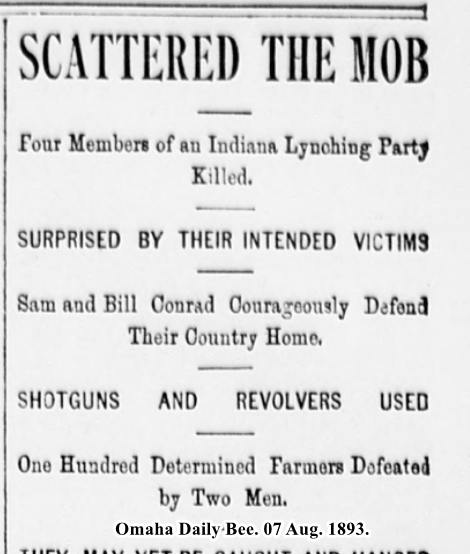The story is simple: Old man Conrad was found dead and after an investigation, the local sheriff arrested the two sons. The town folk wanted to lynch them, but authorities convinced them to let the justice system work. The trial was done and the sons were found not guilty.
That was not what the people wanted, so several nights later, a mob (some sources said “whitecaps” were the leaders) congregated and went to the house to “speak” with the sons who responded with shotgun shot and revolvers. No lynching.
Helping doing this research I am involved with, has allowed me to read more about lynchings than anybody should as there are some seriously horrifying cases I wish I have never knew about. Only two things I have seen that have frustrated a mob from committing this evil deed: A sheriff moving the prisoner from jail to a secret location ( the minority of times and with about a 50% failure rate) or the use of firearms and the dropping of bodies.
The lesson for today: Keep your guns and keep your very high capacity magazines to help you keep mobs in check.


More recently, guns were a critical tool in permitting civil rights activists to survive their work in the South in the 1950s. It’s described at length in one of the chapters of “The gun culture and its enemies” (edited by William Tonso).
Then there is this quote:
“There was very little quarreling or fighting, due, Roosevelt suspected, to the fact that all the men were armed; for, it seemed, that when a quarrel was likely to end fatally, men rather hesitated about embarking upon it.”
That appears in Hermann Hagedorn’s book “Roosevelt in the Bad Lands”, a 1921 book about Theodore Roosevelt’s years as a cattle rancher in North Dakota (around 1884).
And I think it was Lott who mentioned the murder rate in two 19th century working class towns: Lead, CO and New Bedford, MA. That in Lead was much lower; the only obvious difference between the two towns is that in Lead nearly everyone was armed, and in New Bedford few were.